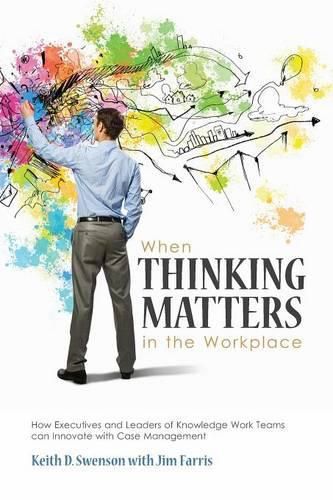Readings Newsletter
Become a Readings Member to make your shopping experience even easier.
Sign in or sign up for free!
You’re not far away from qualifying for FREE standard shipping within Australia
You’ve qualified for FREE standard shipping within Australia
The cart is loading…






This title is printed to order. This book may have been self-published. If so, we cannot guarantee the quality of the content. In the main most books will have gone through the editing process however some may not. We therefore suggest that you be aware of this before ordering this book. If in doubt check either the author or publisher’s details as we are unable to accept any returns unless they are faulty. Please contact us if you have any questions.
Executives and managers already know that smart people need freedom to innovate and create. Automation of their work, done haphazardly, can put strait-jackets on your most creative people. You don’t want to put in place technology that micro-manages your knowledge workers. Robots don’t innovate.
When Thinking Matters in the Workplace is an in-depth review of how knowledge workers and innovators get their work done. It gives you the background of complex organizational behavior and matches that up with mature management approaches as well as business architecture. Then, it surveys the different kinds of technologies you might use to help innovators collaborate and get their work done. Naive approaches can lead down paths that actually make it harder for knowledge workers to get things done. Care must be taken to provide support that increases their productivity. This book provides some guidelines to help avoid the worst pitfalls and to take the best advantage of an adaptive approach for supporting knowledge workers. Written as an antidote to the office automation and business process management approaches, this book shows how a case management approach can be applied in almost any field where knowledge workers are needed. It breaks out the different factors that are important in case management. More importantly, it show the two kinds of case management, one for knowledgeable professionals and the other for true innovators. It explains how automation can have the effect of restricting what people do, which might be fine for a factory, but can be very costly if you are counting on flexibility to beat the competition.
$9.00 standard shipping within Australia
FREE standard shipping within Australia for orders over $100.00
Express & International shipping calculated at checkout
This title is printed to order. This book may have been self-published. If so, we cannot guarantee the quality of the content. In the main most books will have gone through the editing process however some may not. We therefore suggest that you be aware of this before ordering this book. If in doubt check either the author or publisher’s details as we are unable to accept any returns unless they are faulty. Please contact us if you have any questions.
Executives and managers already know that smart people need freedom to innovate and create. Automation of their work, done haphazardly, can put strait-jackets on your most creative people. You don’t want to put in place technology that micro-manages your knowledge workers. Robots don’t innovate.
When Thinking Matters in the Workplace is an in-depth review of how knowledge workers and innovators get their work done. It gives you the background of complex organizational behavior and matches that up with mature management approaches as well as business architecture. Then, it surveys the different kinds of technologies you might use to help innovators collaborate and get their work done. Naive approaches can lead down paths that actually make it harder for knowledge workers to get things done. Care must be taken to provide support that increases their productivity. This book provides some guidelines to help avoid the worst pitfalls and to take the best advantage of an adaptive approach for supporting knowledge workers. Written as an antidote to the office automation and business process management approaches, this book shows how a case management approach can be applied in almost any field where knowledge workers are needed. It breaks out the different factors that are important in case management. More importantly, it show the two kinds of case management, one for knowledgeable professionals and the other for true innovators. It explains how automation can have the effect of restricting what people do, which might be fine for a factory, but can be very costly if you are counting on flexibility to beat the competition.